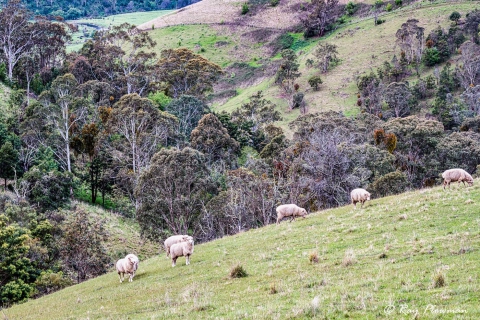Phillip Island and East Gippsland
So, after visiting the Grampians, we continued our road trip visiting Phillip Island and East Gippsland. The Phillip Island gallery features scenic walks at the Nobbies and Swan Lake. In contrast, the East Gippsland galleries include images from Lakes Entrance inland waterways and scenic walks at Cape Conran.
Phillip Island
Phillip Island is a couple of hours’ drive from Melbourne, so very much a family holiday destination. We arrived at our motel in Cowes mid-afternoon; after checking in, we headed for the Nobbies Centre and the Headland. We revisited the Nobbies and Swan Lake the next day before a scenic drive around the island. In the evening we went to the Penguin Parade.
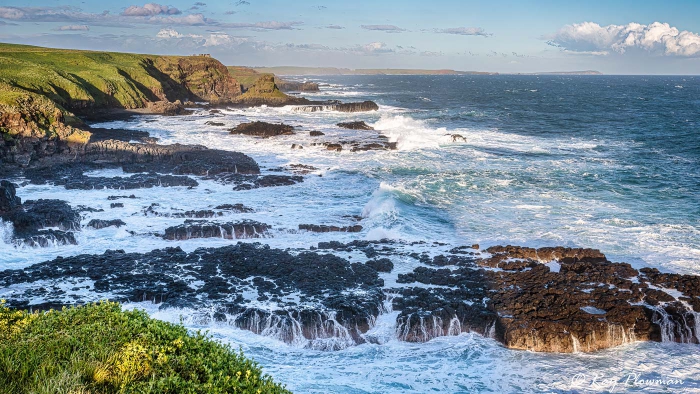
Phillip Island South Coast
Phillip Island south coast looking towards Southpoint Lookout from the Nobbies headland.
The Nobbies and Swan Lake at Phillip Island
[foogallery id=”17861″]
The Nobbies on the south coast of Phillip Island is home to the colonies of silver gulls and little penguins. Further, boardwalks pass through the bird colonies, and lookouts provide panoramas of the coastal scenery.
Near the Penguin Parade Centre is the Swan Lake Trail, an easy short walk. It has a boardwalk section to a couple of viewing hides overlooking the lake. There was limited bird activity during our visit, just black swans, common coots, and welcome swallows.
The gallery features landscapes at the Nobbies and Swan Lake. Also, bird behavioural images include two endemic species, cape barren geese and black swan. Further, the silver gull is an Australasian endemic species; the nominate subspecies is endemic to Southern Australia and Tasmania. Common (Eurasian) coot has a widespread distribution. I also photographed native welcome swallows in the hides.
Phillip Island Penguin Parade
The main wildlife attraction at Phillip Island is the Penguin Parade; unfortunately, they do not allow photography as flash causes distress to the birds. It does not matter if your camera has no built-in flash; it is a one-size-fits-all policy. We took a VIP guided research tour which included reserved seating at the front of the Penguin Plus stand. That evening, 2-Oct-2013, about six hundred little penguins came ashore right in front of us. Although I could not photograph the penguins, the experience was rewarding.
East Gippsland
After two nights in Philip Island, we set off to visit East Gippsland for a two-night stay at Lakes Entrance. Gippsland comprises six shires and is primarily a rural area with agriculture, rainforests, and extensive inland waterways. Moreover, East Gippsland has an abundance of wildlife, scenic waterways, wild coastline, long sandy beaches, an excellent place for photography.
Lakes Entrance
Lakes Entrance is a small seaside town on the Gippsland Lakes, Australia’s largest inland waterway that flows into the Bass Strait. Before reaching the town centre, we stopped at Nyerimilang Heritage Park. Unfortunately, the weather was inclement, and the historic homestead closed, so we walked the 4 km circular track. Moreover, we did not encounter much wildlife, and the views of the lakes from the path were less than impressive. After our walk, we checked into our holiday apartment in the town.
Lakes Entrance Esplanade and Jetties Walk
A footpath runs alongside Cunninghame Arm and the Esplanade, providing access to the jetties and boats.
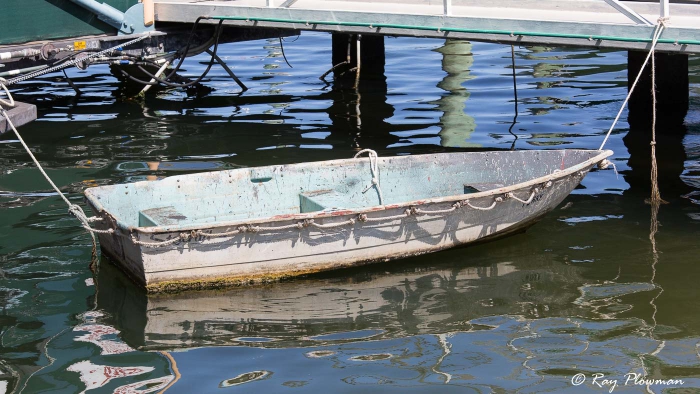
Dingy at Cunninghame Arm
Dingy moored at the Esplanade Jetties, Lakes Entrance’s Cunninghame Arm.
[foogallery id=”17882″]
The gallery features an endemic black swan nesting and an immature silver gull, an Australasian endemic species. In addition, native Australian pelican and little pied cormorant. I also photographed an endemic juvenile Pacific gull and a native welcome swallow, albeit at some distance.
A cruise on the Gippsland Lakes
There are lots of wildlife photographic opportunities in the lakes. So, we booked a three-hour Lonsdale Eco Cruise, which departed at 1 pm from Cunningham Quay Jetty. The boat cruises west as far as Mutung, passing Rigby, Fraser and Flanagan Islands and visiting Box’s and Chinaman’s Creeks. We cruised into the artificial channel that links the inland lakes to the ocean on the way back. Thus, we photograph dolphins and seals that swim and surf the incoming tide.
Birds at Gippsland Lakes
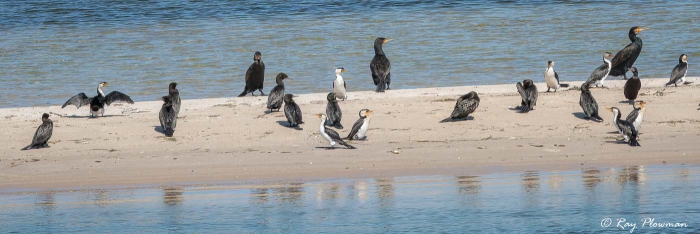
Great, Little Pied and Little Black Cormorants
A mixed flock of great, little pied and little black cormorants were resting on a Gippsland Lakes sand bar.
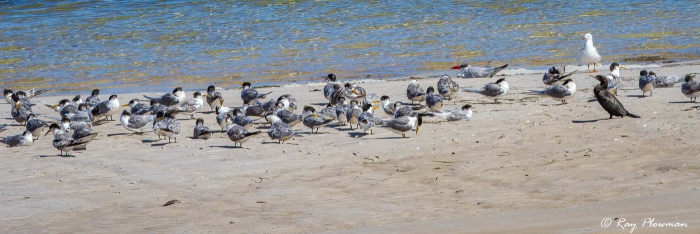
Greater Crested Tern
A flock of greater crested tern was resting and pruning on a sand bar in the Gippsland Lakes. And on the fringe a Caspian tern, little black cormorant and silver Gull.
[foogallery id=”17897″]
The gallery displays the black swan and chestnut teal endemic bird species. Featured native species include Australian pelican, a breeding Endemic, little black and little pied cormorants, and a little tern. Also, Australian great cormorant is a near-endemic, pied oystercatcher, and one subspecies endemic. Other birds I photographed but have not included in the gallery include a native, white-bellied sea eagle, common coot and subspecies endemic silver gull.
Mammals at Gippsland Lakes
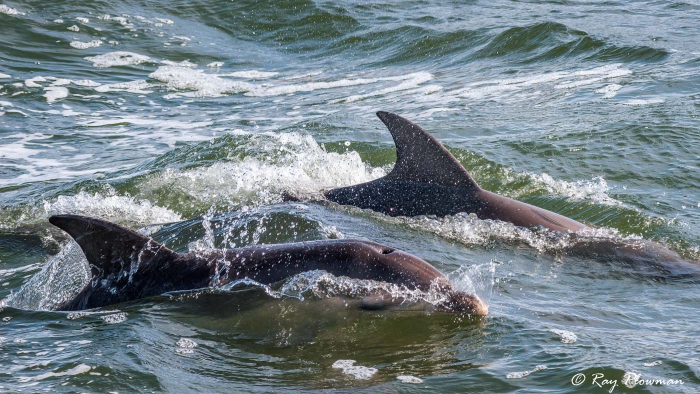
Burrunan Dolphins
Two Burrunan Dolphins (Tursiops truncatus) were surfing the incoming tide at the Lakes Entrance channel in East Gippsland.
[foogallery id=”17905″]
The gallery features Burrunan dolphins, Australian fur seals, and grey kangaroos.
Although not universally accepted, the proposed Burrunan dolphin taxon is Tursiops australis (Ref1 and Ref2). There is a resident population in the Gippsland Lakes, and they also inhabit coastal South Australian waters. Moreover, the common bottlenose dolphin (Tursiops truncatus) is the recognised species found around the Australian coasts.
Australian or brown/Cape fur seal is the largest fur seal species. They breed in the Bass Strait area and inhabit South Australian, Victoria, New South Wales, and Tasmanian coasts.
Eastern grey kangaroos are the second largest in Australia, preferring wet areas of open grassland.
Cape Conran Coastal Park
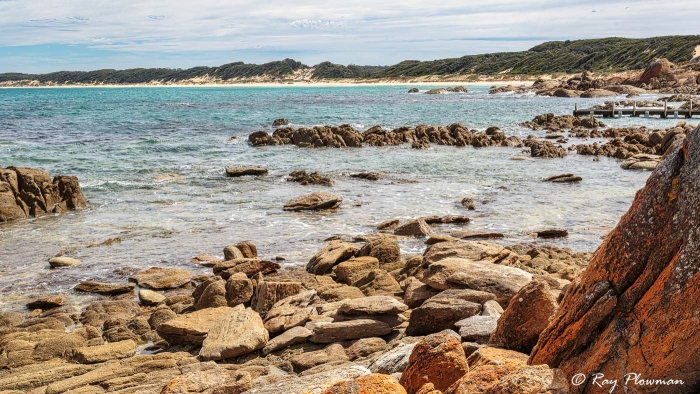
Cape Conran’s West Cape
West Cape at Cape Conran Coastal Park, East Gippsland.
[foogallery id=”17914″]
We planned a night stopover at Sale in Central Gippsland after our two-night stay at Lakes Entrance. However, we first visited Cape Conran Coastal Park about 70 km further east. Our first brief stop was at the Snowy River estuary in the Marlo Coastal Reserve. Then to Point Ricardo, with a small carpark and beach access, finally to Cape Conran for scenic walks.
At Point Ricardo, I spotted some Black-eyed Susan plants, a North American native species growing in the wild. Although they added foreground interest to an otherwise uninteresting photo, they do not belong there.
At Cape Conran, we visited both East and West Capes beaches and walked part of the coastal trails.
Great Alpine Road from Bruthen to Bairnsdale
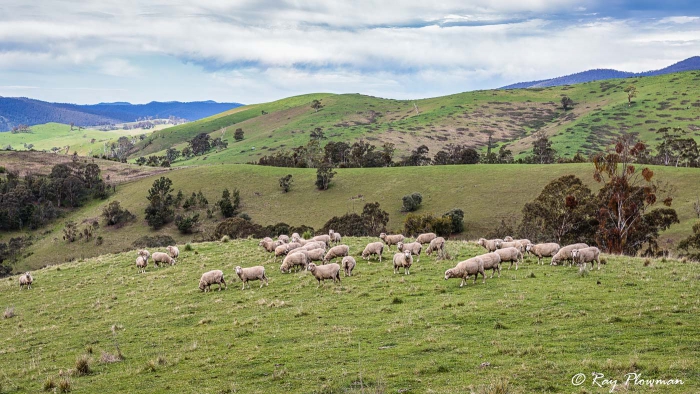
Rolling Hills at East Gippsland
West Cape at Cape Conran Coastal Park, East Gippsland.
Great Alpine Road from Bruthen to Bairnsdale
Rolling Hills at East Gippsland
Rolling Hills along the Great Alpine Road from Bruthen to Bairnsdale at East Gippsland.
Great Alpine Road Farmland
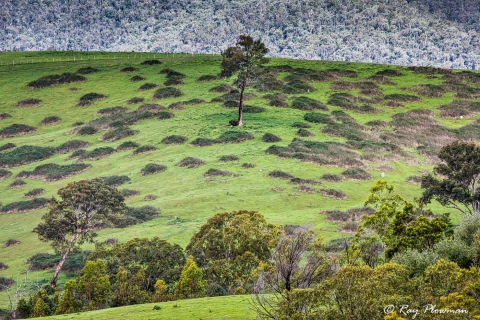
Great Alpine Road Landscape
After our visit to Cape Conran, we headed north on the Cabbage Tree Conran Road to join the Princess Highway. Then a scenic drive via Bruthen, Bairnsdale to Sale in Central Gippsland. We stopped on the Great Alpine Road between Bruthen and Bairnsdale to photograph the landscape.
Continue the 2013 Tour of Victoria
We drove from Lakes Entrance via Cape Conran and the Alpine Road to Sale in Central Gippsland; ‘Next’ to continue to the Central and East Gippsland webpage.
Or ‘VIC’ to go to the Nature and Wildlife in Victoria, Australia webpage.
References and Bibliography – Online Resources
1. A New Dolphin Species, the Burrunan Dolphin. 2011. [Online] Available from https://journals.plos.org/plosone/ [Accessed 22-Feb-22].
2. World Register of Marine Species – Tursiops australis. 2011. [Online] Available from: https://www.marinespecies.org/index.php [Accessed 22-Feb-22].
3. Phillip Island Nature & Wildlife. [Online] Available from: https://www.visitphillipisland.com.au/ [Accessed 22-Feb-22].
4. Visit East Gippsland. [Online] Available from: https://www.visitgippsland.com.au/ [Accessed 22-Feb-22].
